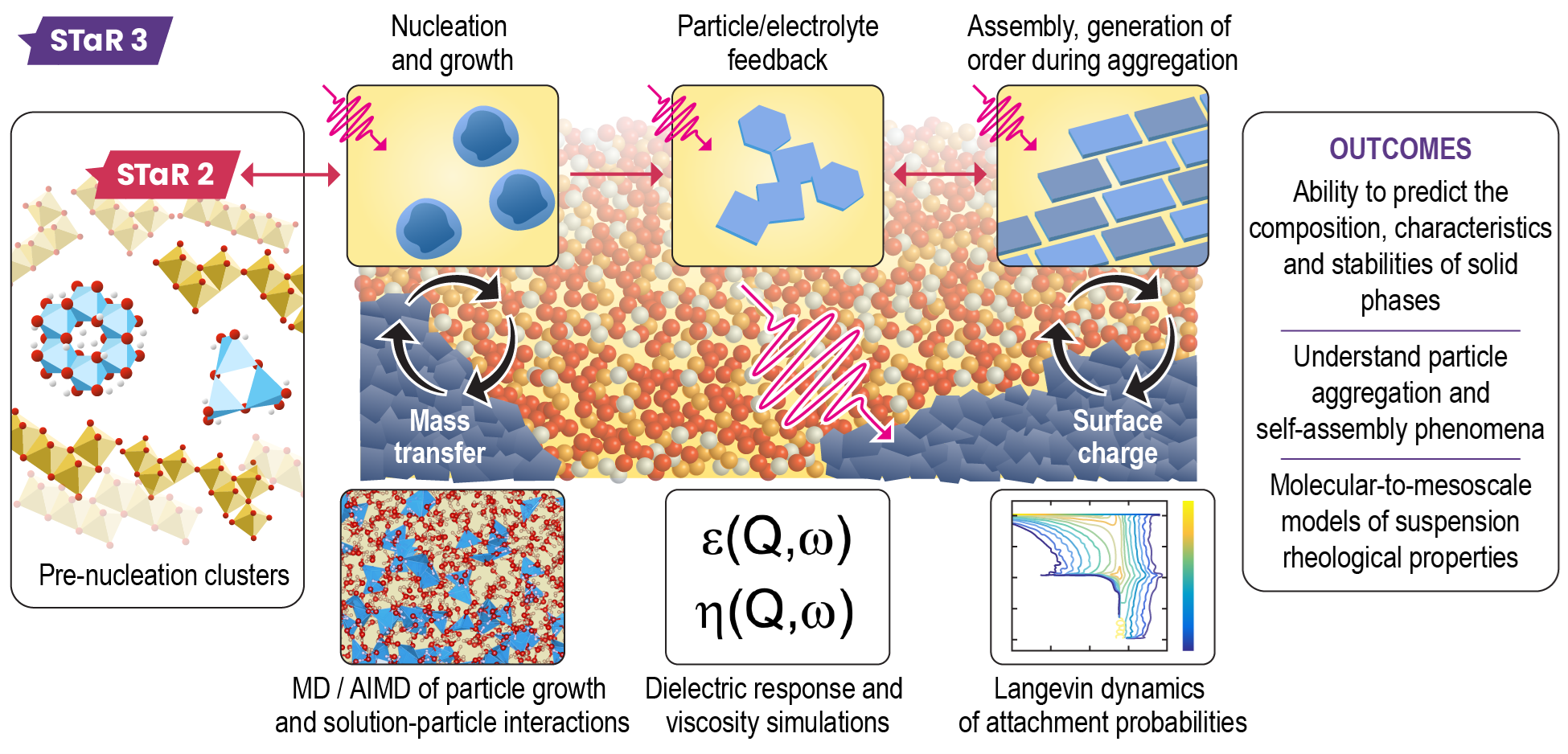STaR 3: Emergent Phenomena
Goal: Determine how radiation drives the nucleation, growth, dissolution, and aggregation of particles in concentrated electrolyte suspensions.
Experimental Lead: Kevin Rosso, Theory Lead: Gregory Schenter
Radiation drives the far-from-equilibrium properties of solution and emerging solid phases, creating a dynamic polyphasic system with new environments for radiolysis reactions and transient intermediates as well as affecting thermodynamic stability, mass transfer, and particle–particle interactions. These coupled effects can alter the properties of the particles and their suspensions, including in the following ways: (1) constraining solvent availability and structure, (2) altering metal cation speciation and ion–solvent networks, (3) changing the defect content that underlies structural order in growing solids, and (4) influencing the acidity of surface functional groups that contribute to surface charge and interparticle forces. STaR 3 emphasizes understanding the radiation-driven precipitation, phase evolution, and aggregation processes that define the behavior of particle suspensions over long timescales. This requires building on the knowledge gained from other STaRs concerning radiation effects on solution structure and dynamics to understand the influences resulting from the creation of solid particles.
Our research is focusing on radiation-driven nucleation and particle growth processes as well as the behavior of particle ensembles in irradiated suspensions. We are also assembling insights regarding solution and particle behavior from all three STaRs into coarse-grained models of radiolytically driven suspension properties, phase changes, and transport phenomena.
